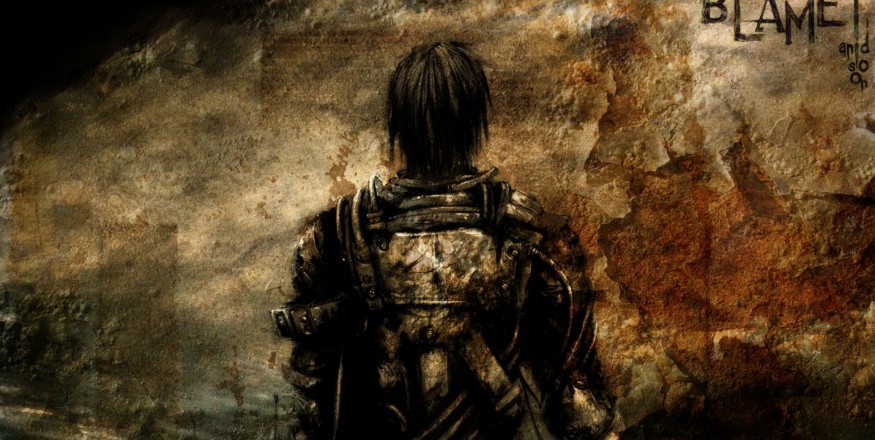The Lesser Key of Solomon, also known as Clavicula Salomonis Regis or Lemegeton, is an anonymous grimoire (or spell book) on demonology. It was compiled in the mid-17th century, mostly from materials a couple of centuries older. It is divided into five books—the Ars Goetia, Ars Theurgia-Goetia, Ars Paulina, Ars Almadel, and Ars Notoria.975Please respect copyright.PENANABksF59dbcb
Ars Goetia975Please respect copyright.PENANA813k8d8EZO
The most obvious source for the Ars Goetia is Johann Weyer's Pseudomonarchia Daemonum in his De praestigiis daemonum. Weyer does not cite, and is unaware of, any other books in the Lemegeton, indicating that the Lemegeton was derived from his work, not the other way around. The order of the spirits was changed between the two, four additional spirits were added to the later work, and one spirit (Pruflas) was omitted. The omission of Pruflas, a mistake that also occurs in an edition of Pseudomonarchia Daemonum cited in Reginald Scot's The Discoverie of Witchcraft, indicates that the Ars Goetia could not have been compiled before 1570. Indeed, it appears that the Ars Goetia is more dependent upon Scot's translation of Weyer than Weyer's work in itself. Additionally, some material was used from Heinrich Cornelius Agrippa's Three Books of Occult Philosophy, the Heptameron by pseudo-Pietro d'Abano, and the Magical Calendar.
Weyer's Officium Spirituum, which is likely related to a 1583 manuscript titled The Office of Spirits, appears to have ultimately been an elaboration on a 15th-century manuscript titled Le Livre des Esperitz (of which 30 of its 47 spirits are nearly identical to spirits in the Ars Goetia).
In a slightly later copy made by Thomas Rudd, this portion was labelled "Liber Malorum Spirituum seu Goetia", and the seals and demons were paired with those of the 72 angels of the Shemhamphorasch, who were intended to protect the conjurer and control the demons he summoned. The angelic names and seals were derived from a manuscript by Blaise de Vigenère, whose papers were also used by Samuel Liddell MacGregor Mathers in his works for the Hermetic Order of the Golden Dawn. Rudd may have derived his copy of Liber Malorum Spirituum from a now-lost work by Johannes Trithemius, who taught Agrippa, who in turn taught Weyer.
This portion of the work was later translated by S. L. MacGregor Mathers and published by Aleister Crowley under the title The Book of the Goetia of Solomon the King. Crowley added some additional invocations previously unrelated to the original work, as well as essays describing the rituals as psychological exploration instead of demon summoning.975Please respect copyright.PENANAlONRPcMqyB
The Seventy-Two Demons
The demons' names (given below) are taken from the Ars Goetia, which differs in terms of number and ranking from the Pseudomonarchia Daemonum of Weyer. As a result of multiple translations, there are multiple spellings for some of the names, which are given in the articles concerning them.
1) King Bael975Please respect copyright.PENANA6A6RFBKyo1
2) Duke Agares975Please respect copyright.PENANATEV3X7hCHh
3) Prince Vassago975Please respect copyright.PENANARWNR3a83ed
4) Marquis Samigina975Please respect copyright.PENANAJGE6SOzqWH
5) President Marbas975Please respect copyright.PENANAIGBCemu4t4
6) Duke Valefor975Please respect copyright.PENANAn6aNCQ0q7J
7) Marquis Amon975Please respect copyright.PENANAbf7kBUO3PT
8) Duke Barbatos975Please respect copyright.PENANAMKyH2TEiBg
9) King Paimon975Please respect copyright.PENANA62T3SmSh9U
10) President Buer975Please respect copyright.PENANAz8bkbxuX0L
11) Duke Gusion975Please respect copyright.PENANAwLakivdP9q
12) Prince Sitri975Please respect copyright.PENANAAOVzlaY0Bm
13) King Beleth975Please respect copyright.PENANAnVLmU1I264
14) Marquis Leraje975Please respect copyright.PENANAhqKYrqqg5y
15) Duke Eligos975Please respect copyright.PENANAiaiBRD7ZE3
16) Duke Zepar975Please respect copyright.PENANAobPNVdV06P
17) Count/President Botis975Please respect copyright.PENANAHKVaVxIxiU
18) Duke Bathin975Please respect copyright.PENANArajQX6vOak
19) Duke Sallos975Please respect copyright.PENANA5u18z0nfe3
20) King Purson975Please respect copyright.PENANAnMGz0WBLFd
21) Count/President Marax975Please respect copyright.PENANArMnpXFAaTH
22) Count/Prince Ipos975Please respect copyright.PENANANofOySYu0d
23) Duke Aim975Please respect copyright.PENANAnjz8ylOBRc
24) Marquis Naberius975Please respect copyright.PENANASVHkHtKPpE
25) Count/President Glasya-Labolas975Please respect copyright.PENANABGhR4rIXTA
26) Duke Buné975Please respect copyright.PENANAk7PsJFlYLJ
27) Marquis/Count Ronové975Please respect copyright.PENANAjhO1sIb4DQ
28) Duke Berith975Please respect copyright.PENANAbTW3wGwIyH
29) Duke Astaroth975Please respect copyright.PENANAs8NlAF4EsZ
30) Marquis Forneus975Please respect copyright.PENANAOEU57lHysj
31) President Foras975Please respect copyright.PENANALvRgh6UTVI
32) King Asmoday975Please respect copyright.PENANAmFAx0uOELM
33) Prince/President Gäap975Please respect copyright.PENANAtAIekt64oX
34) Count Furfur975Please respect copyright.PENANA2ypqYGhhgs
35) Marquis Marchosias975Please respect copyright.PENANAHd08g3IDYG
36) Prince Stolas975Please respect copyright.PENANAatnw4MXG9a
37) Marquis Phenex975Please respect copyright.PENANADD5PPhph7E
38) Count Halphas975Please respect copyright.PENANAvrKcKOkyy8
39) President Malphas975Please respect copyright.PENANAZcHZINhCEP
40) Count Räum975Please respect copyright.PENANA3CLNKxppGY
41) Duke Focalor975Please respect copyright.PENANAs1TmT52B6v
42) Duke Vepar975Please respect copyright.PENANAvehnnMDEOH
43) Marquis Sabnock975Please respect copyright.PENANAcjqSfPctGG
44) Marquis Shax975Please respect copyright.PENANAfOmpuIr946
45) King/Count Viné975Please respect copyright.PENANAMUMMlBo6zx
46) Count Bifrons975Please respect copyright.PENANA74BMKQIWIs
47) Duke Vual975Please respect copyright.PENANAQ5TBllLRNP
48) President Haagenti975Please respect copyright.PENANA47KLMxWWPb
49) Duke Crocell975Please respect copyright.PENANA6cZefE9nME
50) Knight Furcas975Please respect copyright.PENANAia90cZHf4T
51) King Balam975Please respect copyright.PENANAH4pJTOzBzS
52) Duke Alloces975Please respect copyright.PENANAEG88L0kRbm
53) President Caim975Please respect copyright.PENANAY2mTep8on6
54) Duke/Count Murmur975Please respect copyright.PENANAXF5Xl3Su39
55) Prince Orobas975Please respect copyright.PENANAy2xprVxQzH
56) Duke Gremory975Please respect copyright.PENANALfpLSsQQe2
57) President Ose975Please respect copyright.PENANA3FoSl4NwKO
58) President Amy975Please respect copyright.PENANALFF56uyv8N
59) Marquis Orias975Please respect copyright.PENANAVVBWNc3XUj
60) Duke Vapula975Please respect copyright.PENANA2SN9sGKjRw
61) King/President Zagan975Please respect copyright.PENANAAiQaACTGO2
62) President Valac975Please respect copyright.PENANAauADPbBec1
63) Marquis Andras975Please respect copyright.PENANASMjOF8nF2j
64) Duke Flauros975Please respect copyright.PENANABbHNcF5bHL
65) Marquis Andrealphus975Please respect copyright.PENANAU9rObUFyOf
66) Marquis Kimaris975Please respect copyright.PENANAxDC2uoR4Xb
67) Duke Amdusias975Please respect copyright.PENANAifdUCWcN4m
68) King Belial975Please respect copyright.PENANApnaTQPzRyN
69) Marquis Decarabia975Please respect copyright.PENANAeF7BH4eJSX
70) Prince Seere975Please respect copyright.PENANA1H2R9xIvAa
71) Duke Dantalion975Please respect copyright.PENANAHRTdhDUCK5
72) Count Andromalius
The demons are described as being commanded by four kings of the cardinal directions: Amaymon (East), Corson (West), Ziminiar (North), and Gaap (South). A footnote in one variant edition instead lists them as Oriens or Uriens, Paymon or Paymonia, Ariton or Egyn, and Amaymon or Amaimon, alternatively known as Samael, Azazel, Azael, and Mahazael (purportedly their preferred rabbinic names).[10] Agrippa's Occult Philosophy lists the kings of the cardinal directions as Urieus (East), Amaymon (South), Paymon (West), and Egin (North); again providing the alternate names Samuel (i.e. Samael), Azazel, Azael, and Mahazuel. The Magical Calendar lists them as Bael, Moymon, Poymon, and Egin, though Peterson notes that some variant editions instead list '"Asmodel in the East, Amaymon in the South, Paymon in the West, and Aegym in the North"; "Oriens, Paymon, Egyn, and Amaymon"; or "Amodeo [sic] (king of the East), Paymon (king of the West), Egion (king of the North), and Maimon."975Please respect copyright.PENANAItABrwCH4U
Ars Theurgia Goetia975Please respect copyright.PENANAm5NbyaV48u
The Ars Theurgia Goetia mostly derives from Trithemius's Steganographia, though the seals and order for the spirits are different due to corrupted transmission via manuscript. Rituals not found in Steganographia were added, in some ways conflicting with similar rituals found in the Ars Goetia and Ars Paulina. Most of the spirits summoned are tied to points on a compass, four Emperors tied to the cardinal points (Carnesiel in the East, Amenadiel in the West, Demoriel in the North and Caspiel in the South), sixteen Dukes tied to cardinal points, inter-cardinal points, additional directions between those. There are an additional eleven Wandering Princes, totaling thirty one spirit leaders who each rule several to a few dozen spirits.975Please respect copyright.PENANATunpnc5J4X
975Please respect copyright.PENANAolY0Yw8zz8
Ars Paulina975Please respect copyright.PENANAfvO6bCV9cH
Derived from book two of Trithemius's Steganographia and from portions of the Heptameron, but purportedly delivered by Paul the Apostle instead of (as claimed by Trithemius) Raziel. Elements from The Magical Calendar, astrological seals by Robert Turner's 1656 translation of Paracelsus's Archidoxes of Magic, and repeated mentions of guns and the year 1641 indicate that this portion was written in the later half of the seventeenth century. Traditions of Paul communicating with heavenly powers are almost as old as Christianity itself, as seen in some interpretations of 2 Corinthians 12:2-4 and the apocryphal Apocalypse of Paul. The Ars Paulina is in turn divided into two books, the first detailing twenty-four angels aligned with the twenty-four hours of the day, the second (derived more from the Heptameron) detailing the 360 spirits of the degrees of the zodiac.975Please respect copyright.PENANAxX6N2GjAGv
Ars Almadel975Please respect copyright.PENANAOo0ZApX5Vx
Mentioned by Trithemius and Weyer, the latter of whom claimed an Arabic origin for the work. A 15th-century copy is attested to by Robert Turner, and Hebrew copies were discovered in the 20th century. The Ars Almadel instructs the magician on how to create a wax tablet with specific designs intended to contact angels via scrying.975Please respect copyright.PENANAJeyJdbE6mK
Ars Notoria975Please respect copyright.PENANAcvVsueTDQy
The oldest known portion of the Lemegeton, the Ars Notoria (or Notory Art) was first mentioned by Michael Scot in 1236 (and thus was written earlier). The Ars Notoria contains a series of prayers (related to those in The Sworn Book of Honorius) intended to grant eidetic memory and instantaneous learning to the magician. Some copies and editions of the Lemegeton omit this work entirely; A. E. Waite ignores it completely when describing the Lemegeton. It is also known as the Ars Nova.975Please respect copyright.PENANAU5TkiUd2Xi
975Please respect copyright.PENANAZYqQ3GaODL
It has also been said to be the origin of Pandora's box and where the seven deadly sins were born.
1 Gula (gluttony)975Please respect copyright.PENANA024H1YAIM5
2 Luxuria (lust, fornication)975Please respect copyright.PENANACT0xzECzG1
3 Avaritia (avarice/greed)975Please respect copyright.PENANAuSBwrs2x6t
4 Superbia (pride, hubris)975Please respect copyright.PENANAQW3eumZ6EZ
5 Invidia (Envy)975Please respect copyright.PENANAfs7r8AZ0s0
6 Ira (wrath)975Please respect copyright.PENANAUJuvxck6iA
7 Acedia (sloth)975Please respect copyright.PENANAvNBmEpXdgu
If you look any further into it, beware your surrounding... You will uncover, the truth.
ns 15.158.61.41da2





















